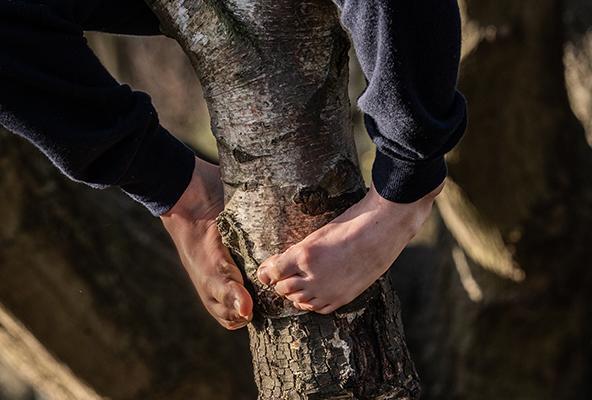The Natural foot is wide, flexible and sensory. It has 200,000 nerve endings. And is a sensory organ for a reason. 70% of our brain's movement information comes from our feet (10% eyes, 20% inner ears). The part of the brain that gets information from the feet is the same size as the part of the brain that gets information from the hands. Take away this feedback and the it gets confused, resulting in unskillful movement that can lead to pain.
HOW HAPPY ARE YOUR FEET?
SKILLFULL BALANCE
A simple, static, yet fundamental skill; standing should be perfected before any dynamic movement occurs. Posture alignment by correct weight distribution and proper use of the feet is essential.
In order to master skillfull balance, you’re going to need toes that have been allowed the freedom to splay (the big toe is a key player in helping centre balance) and arches that have had the opportunity to learn to support themselves. Cramped, padded shoes restrict the toes and block the arch's natural flex and recoil, undermining the foot's propensity for balance.
HOW LOW CAN YOU GO?
Cultures that favour bare feet or minimalist footwear rarely have many chairs in their homes, workplaces or public spaces. Instead, people spend a lot of time in a deep, balanced squatting position – while, for example, they eat or work.
Learning to squat properly, both as a held position and as a dynamic exercise, will help you develop your natural movement more quickly and with less chance of injury.

